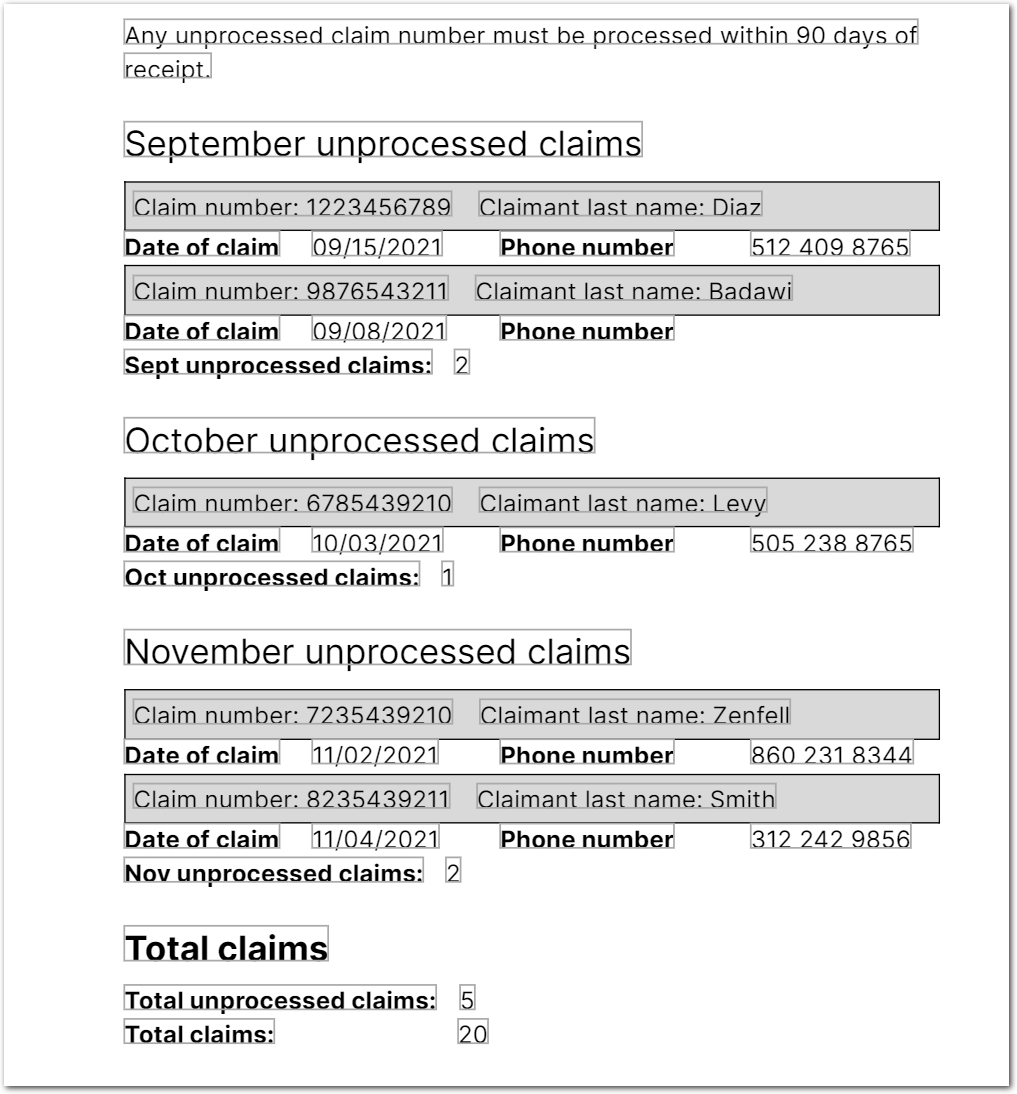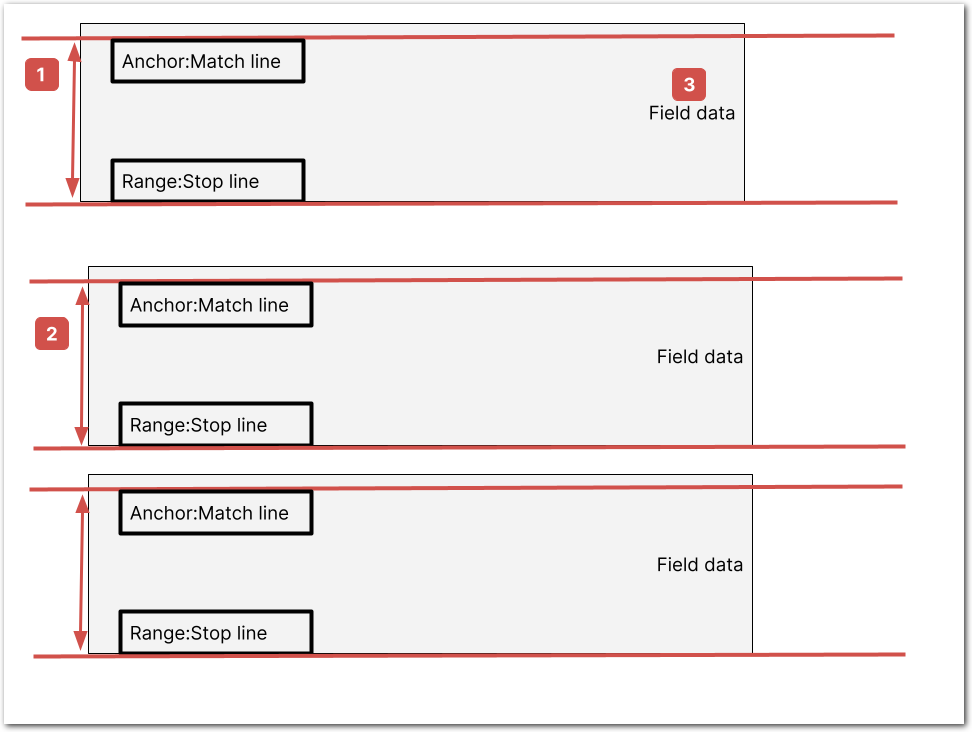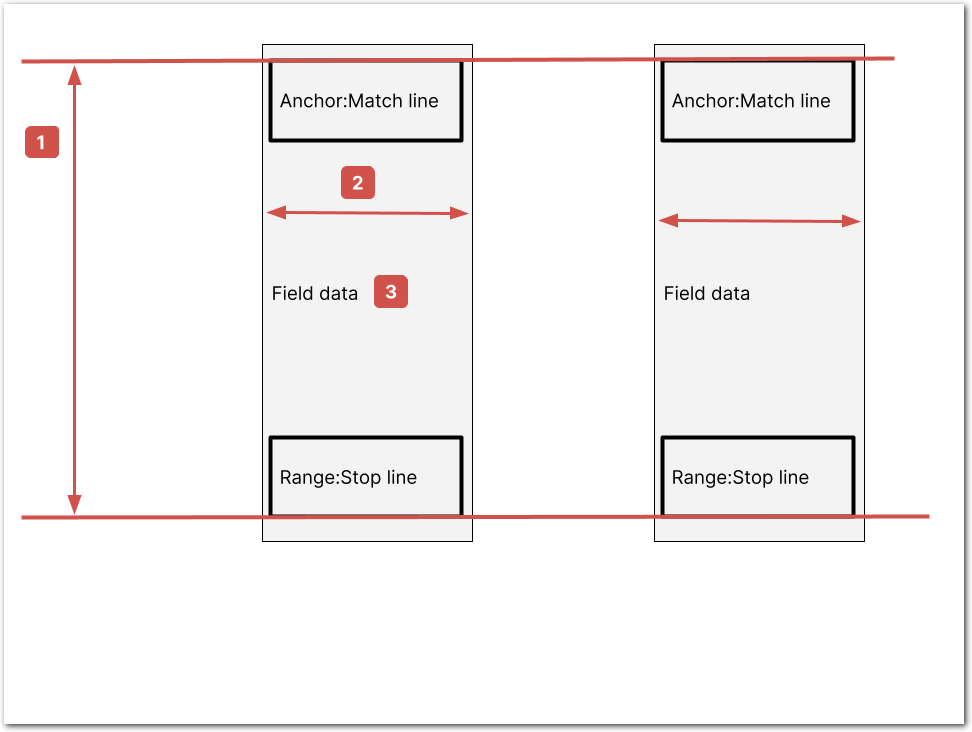Sections
Extracts data from a document that contains complex or repeated elements ("sections"). In effect, a "section" defines a repeating document inside a document, with its own fields.
The following image shows an example of a document containing "claims" sections, where each section starts with claim number and ends below date of claim: TODO: UPDATE SCREENSHOT W GREEN BRACKETS and/or red outlines!!

For the preceding example, you can configure Sensible to return an unprocessed_claims array, where each object in the array contains a claim_number, claim_date, claimant_last_name, and other fields. For more information, see Claims loss run example.
You can define "horizontal" sections ("direction": "horizontal"), as shown in the preceding image, or you can define columnar sections ("direction":"vertical").
Horizontal sections:
The following image shows horizontal sections. For more information, see the following Parameters section, and see Section nuances.

Vertical sections:
The following image shows columnar vertical sections. For more information, see the following Parameters section, and see Section nuances.

Tip: To extract repeated vertical section groups, nest them in parent sections. For an example, see Advanced: nested columns example.
Parameters
| key | value | description |
|---|---|---|
| id (required) | string | Specifies an ID for a group of sections to extract in the document area defined by the Range parameter. You can define an array of section groups, and you can nest sections inside of other sections. |
| type | sections | Specifies that this field extracts sections. |
| range (required) | object | Specifies the document area from which to extract a group of sections. horizontal sections: The sections can span pages and non-section text. For example, in the preceding claims image, sections can interleave with month headings. vertical sections: The sections can span pages. By default, they can't span text that breaks the column format. For the Range object's parameters, see the following table. |
| sections | Specifies sections inside sections. Use this for complex sections that contain nested repeated elements, for example, a grid of tables. Each nested section searches for its range inside each parent section's range. | |
| display | boolean. Default: true | Specifies to display the start and end of each section as brackets overlaid on the rendered document in the Sensible app. Use the brackets to visually troubleshoot sections. |
| requiredFields | object | Array of field IDs that must be non-null for Sensible to return a section. In the Claims loss run example, add the following code to the sections to omit claims that lack a phone number: "requiredFields": ["phone_number"],With the preceding code, Sensible omits claim number 9876543211 from the example output. |
| fields | array of fields | Specifies fields to extract information that you expect to repeat in each section. |
| computed_fields | array of computed fields | Specifies to output computed fields to each section. The computed fields have access to each section's fields. To get access to and transform the output of fields that aren't in the sections' range, use the Copy To Section method. |
Range parameters
TODO add new table here
Examples
See the following topics:
-
Advanced: Nested columns example
-
Advanced: Nested table example
-
Advanced: Table grid example
-
Advanced: Zip sections example
-
Advanced: Zip and flatten nested sections
-
Advanced: External anchors for sections
Notes
- For details about vertical sections, see Section nuances.
- See the Copy To Section computed field method to add globally applicable document information to sections.
- See the Zip computed field for information about zipping sections together.
Updated about 6 hours ago